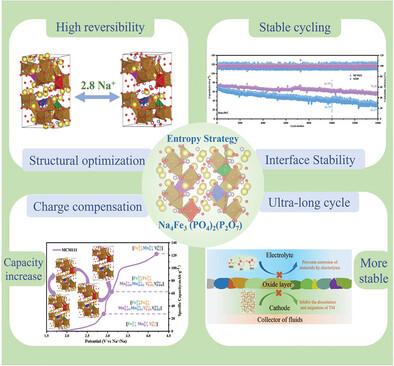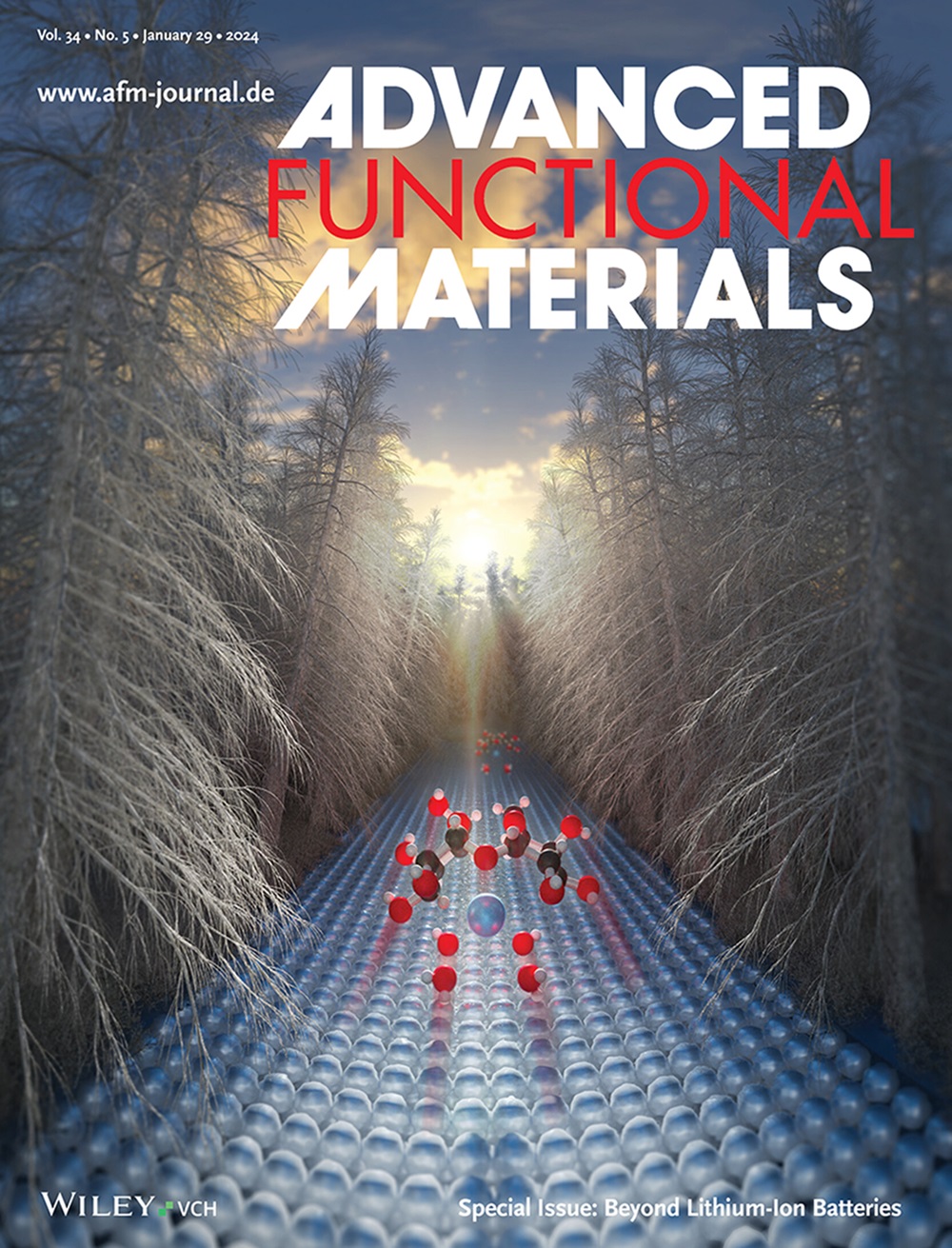High Entropy Helps Na4Fe3(PO4)2P2O7 Improve Its Sodium Storage Performance
IF 18.5
1区 材料科学
Q1 CHEMISTRY, MULTIDISCIPLINARY
引用次数: 0
Abstract
Recently, a high-entropy strategy has attracted extensive attention and is applied to the preparation of electrode materials for energy storage batteries, aiming to improve electrochemical performance. It is found that adjusting the conformational entropy of the material can significantly enhance ion and electron transport efficiency, as well as improve the structural stability of the host material. However, there still remains a lack of deep understanding into the high-entropy strategy, specifically regarding how this approach can alter the intrinsic properties of the material. In this work, the Na4Fe3(PO4)2P2O7 is designed and prepared as a model material with higher entropy, and ultimately, an optimized sample of Na3.9Fe2.6V0.1Mn0.1Cu0.1Mg0.1(PO4)2(P2O7) is achieved. The results indicate that increasing the entropy value of the material notably enhances its crystal structure, diffusion kinetics, and interfacial stability. Consequently, this optimized sample demonstrates deep insertion/extraction of 2.8 Na+, yielding an impressively high capacity of 122.3 mAh g−1 at 0.1C, alongside an ultra-high rate capability of 100C. Remarkably, it also sustains performance over 14 000 cycles at 50C. This study underscores a method for fabricating high-performance electrode materials through the implementation of the entropy strategy.

高熵帮助 Na4Fe3(PO4)2P2O7 提高钠储存性能
最近,高熵策略引起了广泛关注,并被应用于储能电池电极材料的制备,旨在提高电化学性能。研究发现,调整材料的构象熵可以显著提高离子和电子的传输效率,并改善宿主材料的结构稳定性。然而,人们对高熵策略仍然缺乏深入了解,特别是这种方法如何改变材料的内在特性。本研究将 Na4Fe3(PO4)2P2O7 作为高熵模型材料进行设计和制备,最终得到了 Na3.9Fe2.6V0.1Mn0.1Cu0.1Mg0.1(PO4)2(P2O7) 的优化样品。结果表明,提高材料的熵值可显著改善其晶体结构、扩散动力学和界面稳定性。因此,这种经过优化的样品能够深度插入/萃取 2.8 Na+,在 0.1C 时产生 122.3 mAh g-1 的高容量,并具有 100C 的超高速率能力。值得注意的是,它还能在 50C 下保持 14 000 个循环的性能。这项研究强调了一种通过实施熵策略制造高性能电极材料的方法。
本文章由计算机程序翻译,如有差异,请以英文原文为准。
求助全文
约1分钟内获得全文
求助全文
来源期刊

Advanced Functional Materials
工程技术-材料科学:综合
CiteScore
29.50
自引率
4.20%
发文量
2086
审稿时长
2.1 months
期刊介绍:
Firmly established as a top-tier materials science journal, Advanced Functional Materials reports breakthrough research in all aspects of materials science, including nanotechnology, chemistry, physics, and biology every week.
Advanced Functional Materials is known for its rapid and fair peer review, quality content, and high impact, making it the first choice of the international materials science community.
 求助内容:
求助内容: 应助结果提醒方式:
应助结果提醒方式:


